As terrible as war is, it always pushes small arms technology forward. And it’s interesting to track the development of firearms throughout history and warfare.
The history of small arms around the world is fascinating, so we’re taking some time to navigate these waters.
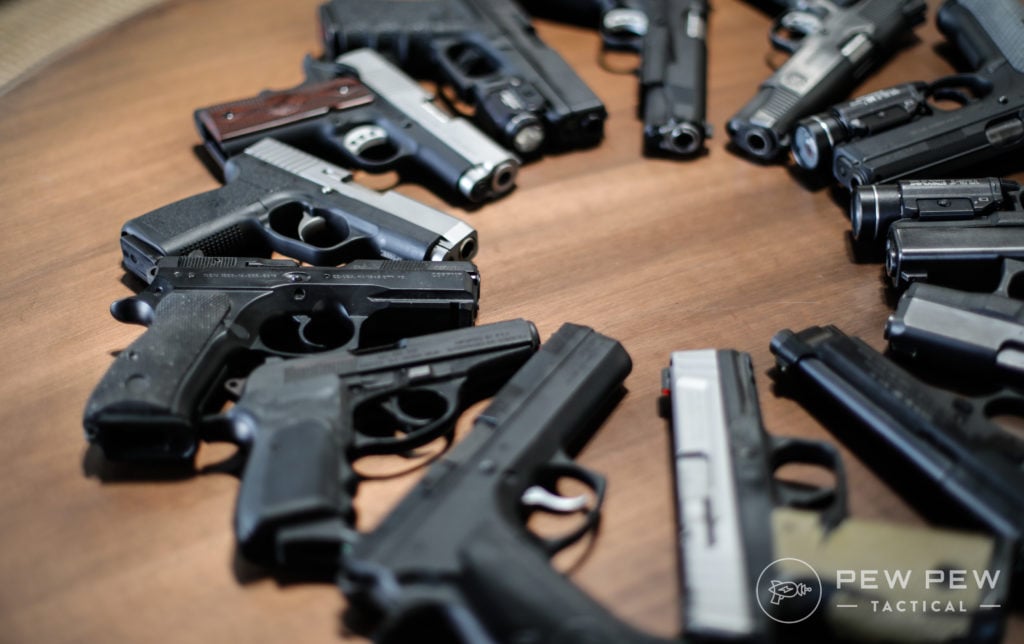
In a new series we’re calling Wartime Weaponry, we’ll look at specific conflicts throughout history worldwide and evaluate the weapons used by men and women in combat.
Today, we kick off this series, starting roughly around the time of the American Civil War.
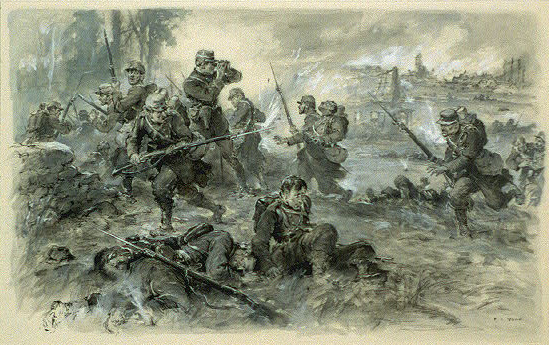
Keep in mind; this serves as a high-level analysis — entire books exist on the small arms used in the Civil War. Heck, entire books have been written about Springfield Model 1861 rifles alone.
So, it’s easy to get into the weeds with some of this.
However, we’ll cover the largest technological innovations observed and the most popular weapons wielded during the Civil War.
Table of Contents
Loading…
American Civil War: 1861 – 1865
The American Civil War could be called the war of rifles.
Though rifles existed before the Civil War, the average soldier usually was armed with a smoothbore musket.
Rifles were often issued to specialist sharpshooters.
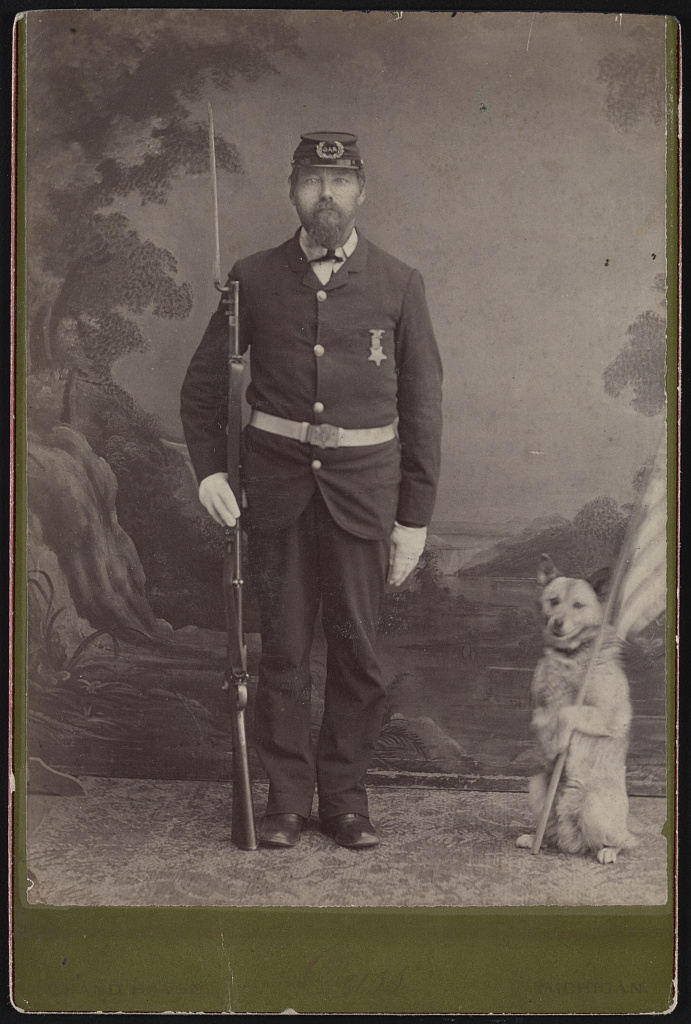
Average soldiers were given muskets as they were faster to reload than rifles.
Rifles took longer to reload because of the tighter projectile to barrel fit.
Not to mention, black powder creates smoke that quickly obscures the battlefield. So, the extra range and accuracy of a rifled barrel weren’t thought to matter.
The invention of the Minié ball solved this problem, though.

It was smaller than the bore but expanded upon firing and was quicker to reload. Oh, and it was just as accurate.
This led to percussion cap rifles becoming the dominant arms of the American Civil War.
Dozens of firearms popped up in the Civil War. Early in the war, smoothbore firearms were quite common.

However, rifles and rifled handguns phased them out as the war raged on.
Many rifles and handguns were personally purchased, and state militias were rarely standardized.
This unorganized manner of equipment led to an extensive catalog of firearms used in the American Civil War.
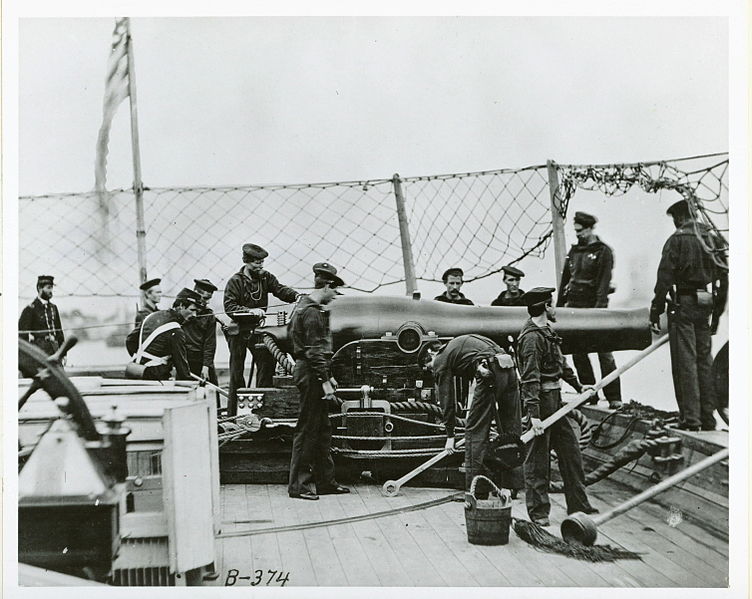
It’s honestly impossible to catalog every firearm used in the American Civil War because of the dominance of personal purchases and small gunsmiths.
However, we do have a good idea of the most popular weapons during the Civil War.
Civil War Rifles
Springfield Model 1861
The Springfield Model 1861 was the most prolific rifle in the American Civil War, wielded extensively by Union troops.
This rifle became well reputed for its dependability, accuracy, and effective range.
Springfield Armory and 20 contracted firms produced over a million.

The Springfield Model 1861 fired a .58 caliber Minie ball and weighed 9-pounds total. It was 54-inches with a 40-inch barrel.
This was no short carbine.
Union soldiers had an effective range of 200- to 300-yards, utilizing flip-up leaf sights to optimistically go out to 500-yards.
While accurate, this was lost on the typical soldier.
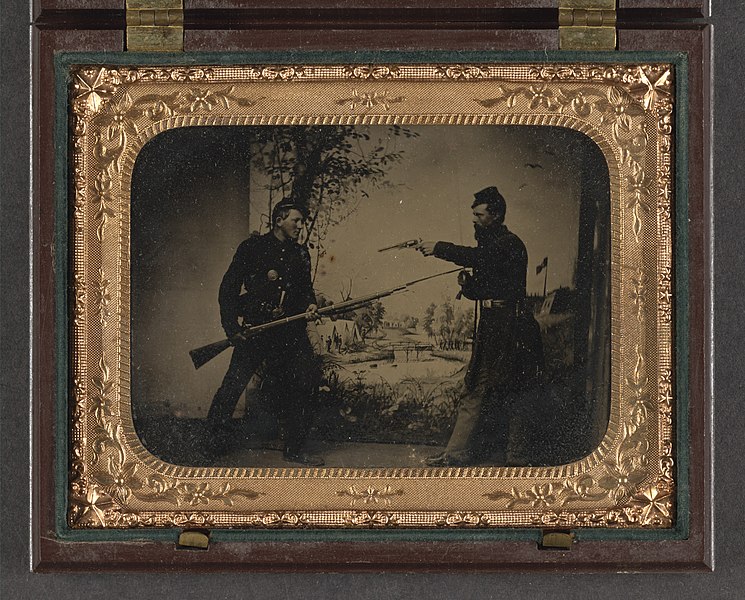
They received very little firearms training, and when they did, the training was based on speed, not accuracy.
Tactics still involved close-range fighting and mass fire-tactics.
At the beginning of battles, soldiers could aim and fire with ease; but the black powder would limit visibility after a few volleys.
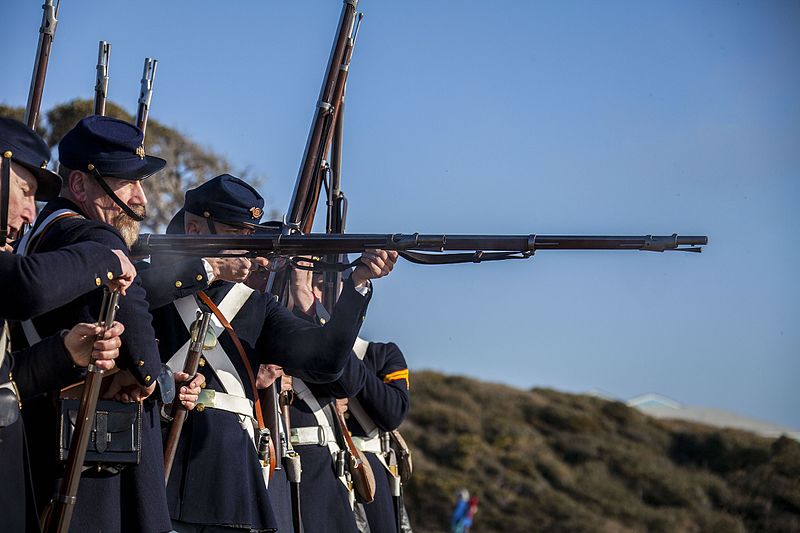
The Springfield 1861 was the first widespread rifled shoulder-fired weapon to be produced in the states. It served from 1861 to 1865 in the U.S. Army’s hands — undoubtedly longer in the hands of militias.
Pattern 1853 Enfield
On the Southern side, the Pattern 1853 Enfield served as the front-line weapon of choice…but Northern forces also used it.
The Confederacy’s lack of industrial prowess prevented them from making their own rifles.

So, Enfield 1853 muskets were imported by the hundreds of thousands – with nearly a million imported.
The Enfield provided accurate fire and a reliable design system with a .577 caliber Minié ball. It could be accurate out to 600-yards.
A British rifle is designed for British soldiers. At the time, British soldiers were quite professional.
As such, the rifle could be used out to longer ranges.
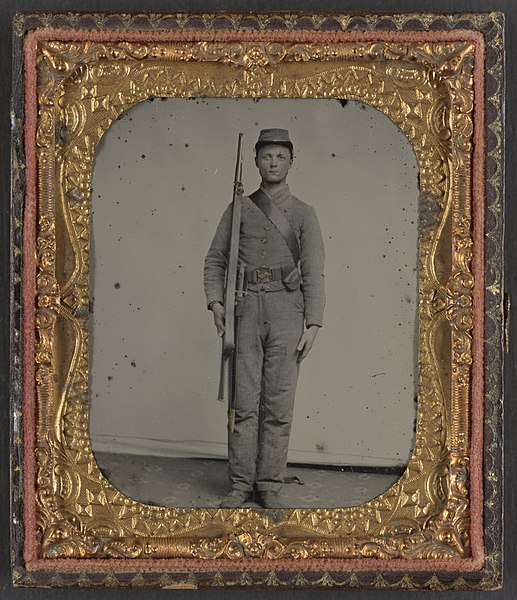
But at 55-inches long and 9.5-pounds, it was far from small.
Interestingly, the Pattern 1853 Enfield utilized ladder-style sights with 100-yard increments.
However, this feature was often lost on the poorly trained troops of the American Civil War.
Whitworth Rifle
The South also utilized the Whitworth rifle — another imported English firearm.
In the 1860s, the Whitworth was a step above in accuracy compared to other rifles on the battlefield.
It utilized polygonal rifling and easily outshot the Enfield and Springfield rifles.

Whitworth rifles also cost four times as much as an average rifle. Therefore, they were only issued to marksmen and sharpshooters.
These proved to be superbly accurate rifles, and Confederates paired them with a telescopic sight.
This sight ran nearly the length of the gun! But it provided shooters with a four-power optic on a battleground of iron sights.
And thus, snipers began taking down Union generals.
One of the highest-ranking Union officers, General John Sedgwick was killed by a Confederate sniper with a Whitworth rifle.
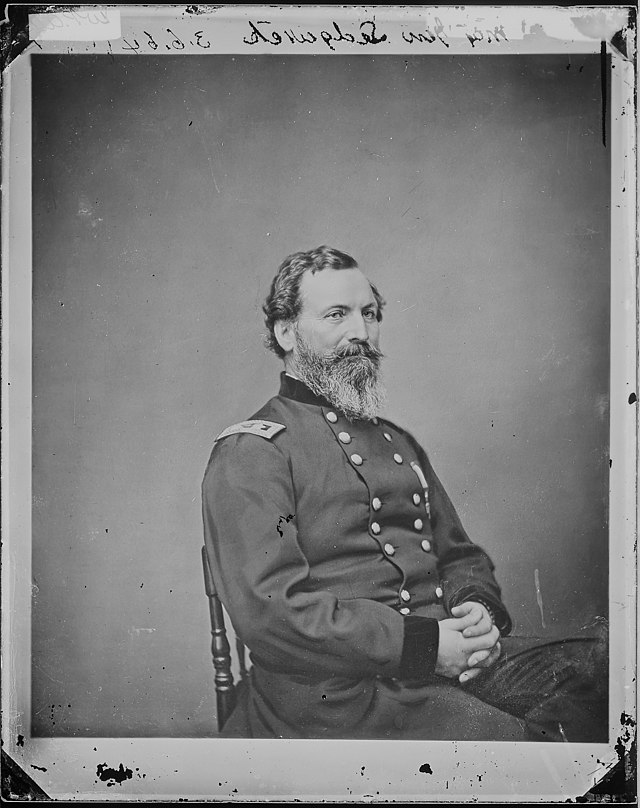
The .451 caliber rifle utilized a 33-inch barrel with an overall length of 49-inches. It was somewhat shorter than most but extremely capable.
This rifle propelled the notion that southerners were better shooters.
That fact is often credited to southern soldiers growing up in rural areas and hunting more often than Union soldiers who lived in larger cities.
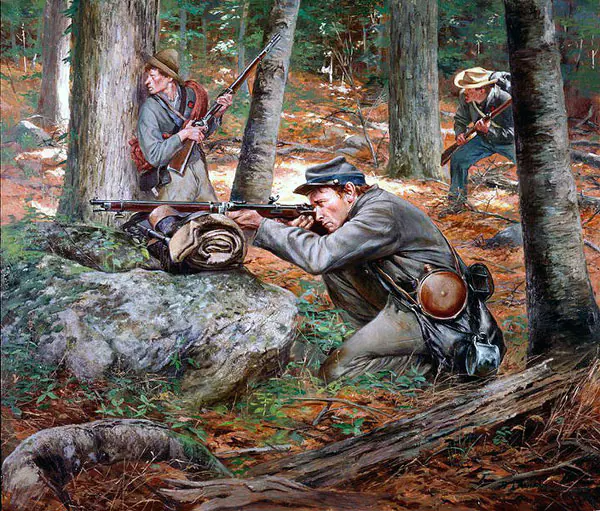
Fun fact: the Union soldiers’ lacking shooting skills would later lead to the creation of the National Rifle Association.
The Sharps Rifle
A favored weapon by both Union and Confederate cavalry forces was the Sharps Rifle.
The Sharps rifle was a falling-block rifle, and the carbine variant saw favor with cavalry forces.
At 39-inches long, it was smaller, lighter, and easier to wield on horseback.

On top of that, the pellet primer feed allowed the use of a stack of pellets. This made it easier to reload the weapon on horseback.
After the war, these guys stuck around as cartridge conversion, firing the .50-70 Government round.
It proved that the more things change, the more they stay the same.
The Sharps rifle was handier on a horse, much like an M4 is handier in an HMMWV.
Metallic Cartridges & Repeating Rifles
Paper cartridges were the most common option for Civil War soldiers, but the war saw a hefty amount of metallic cartridge use as well.
Lots of pinfire and rimfire rounds were fired in anger as American forces clashed.
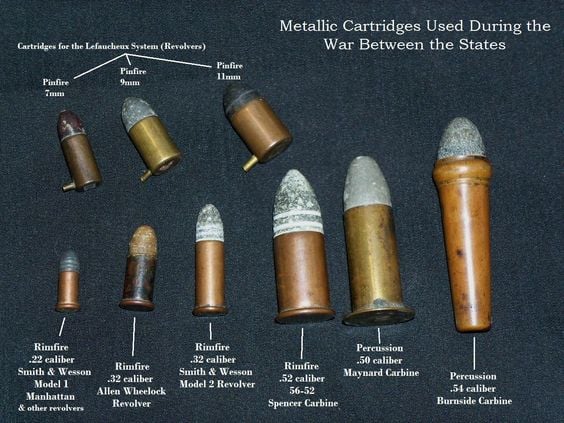
Metallic cartridges made reloading much faster and allowed for repeating actions.
Thus, repeating rifles entered the fray and quickly dominated.
Repeating rifles allowed the soldier to increase their rate of fire tenfold.
Most repeating rifles fell into two categories — Spencer or Henry lever-action rifles.
That said, the Colt M1855 revolver rifles were another notable repeater.
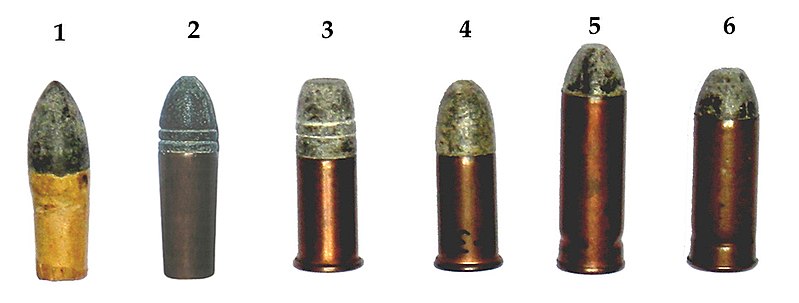
Spencer Rifles
Spencer rifles gained favor with President Lincoln after a demonstration showed what it offered Union forces.
Albeit, Generals were resistant to the idea of soldiers wasting ammunition via a repeater.
However, these repeating rifles gained favor and were adopted or privately purchased for use on both sides of the Civil War.
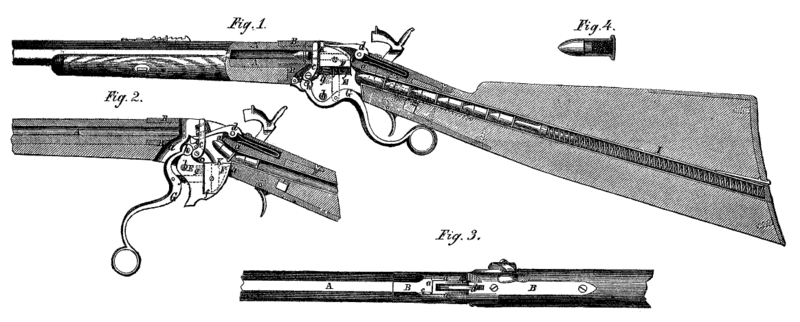
Spencer rifles fired the .56-56 Spencer, which was a rimfire round, stacked in a 7-round tubular magazine placed in the rifle’s stock.
Shooters had to work a lever and manually cock the hammer, but it was significantly faster than other rifles.
Famously, John T. Wilder saw the potential of the Spencer rifle.
While the Army wouldn’t issue the rifle, he and his men of the Lightning Brigade voted to adopt the rifle.
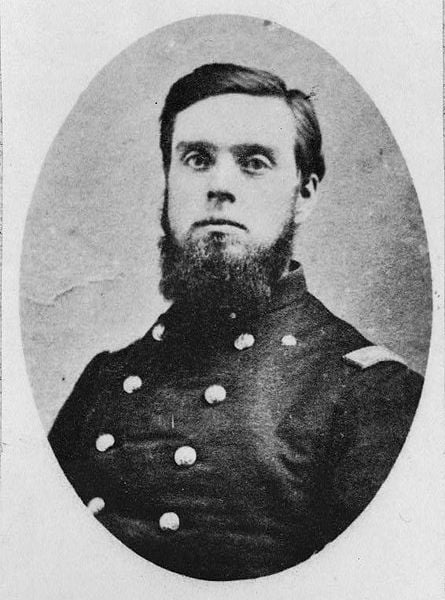
Wilder secured a loan from his hometown bank, and each man from his brigade cosigned the loan. Each man owed $35 for their Spencer rifles.
As one helluva infantry officer, this move embarrassed the Army.
The Army took on the debt and ensured the men didn’t spend their own money on the rifles.
If Wilder had been any less of an officer, he would have likely been reprimanded.
Henry Rifles
The Henry rifle was never issued on a large scale, but it made a difference when it was.
Two Henry Armed Union regiments fended off massive Confederate attacks at the Battle of Franklin.
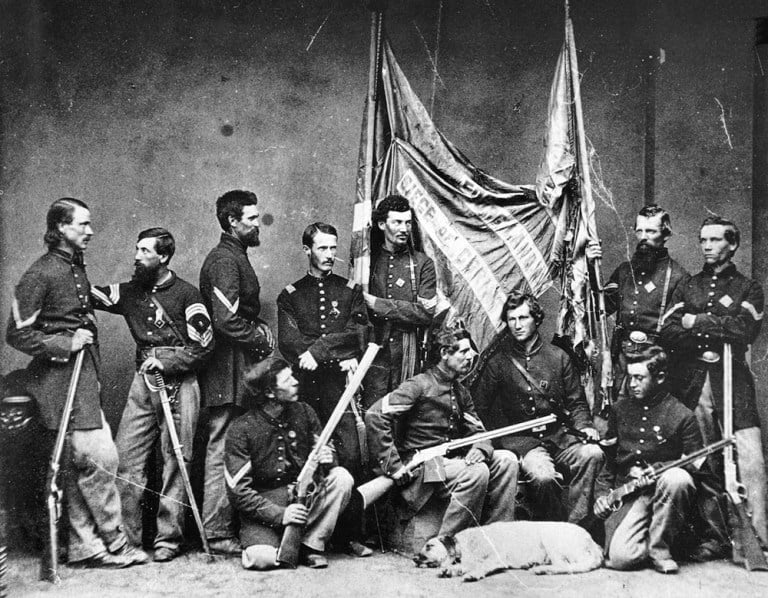
The fast-firing rifles were a force multiplier at the time.
While more fragile than Spencer rifles, they held 15 rounds of .44 Henry Rimfire, and the lever loaded the weapon and cocked the hammer.
1855 Revolver Rifle
The 1855 Revolver rifle looks sweet but was never successful.
It held less ammunition than both lever guns, and the only real advantage was the ability to use common and cheap paper cartridges.

However, these paper cartridges also tended to ignite easily. Firing one round might ignite the other five in the cylinder.
That said, in the early days of the war, these carbines reportedly proved effective — used by both Southern and Northern troops.
Before lever gun availability, these repeaters allowed a single soldier to get off six shots compared to one from a percussion rifle.
Sidearms of the Civil War
Sidearms of the Civil War are more varied than the rifles and smoothbore long guns.
Soldiers often brought their own handguns. They could be smoothbore percussion pistols, revolvers, or even pepperbox pistols.
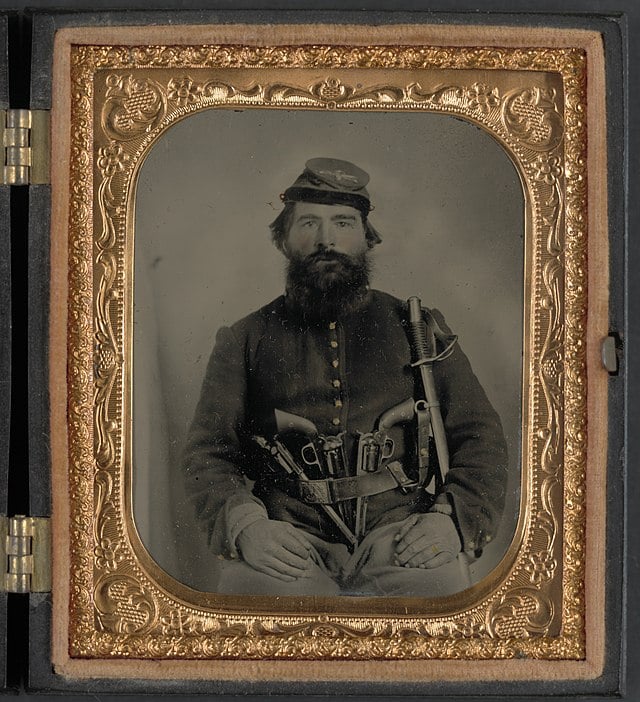
Colt M1847 Walker Revolver and Model 1860
The Colt M1847 Walker Revolver and Colt Army Model 1860 were the top choices of Union Soldiers in the east.
While the M187 Walker was a hefty .44 caliber revolver issued to the cavalry to kill the mounts of rival cavalry.
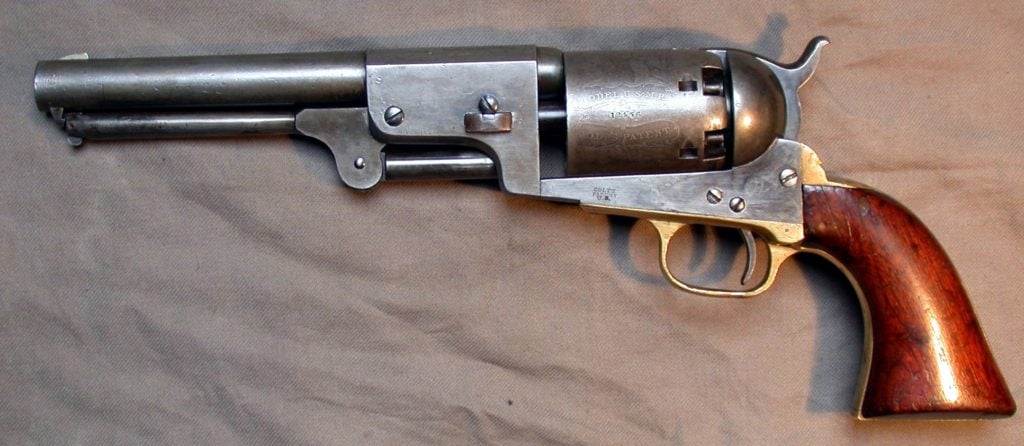
In fact, it was the most powerful revolver of the day and retained that title for decades.
Measuring 15.5-inches long and weighing 4.5-pounds. When it ran out of ammo, you could use it as a club.
The Colt Model 1860 was also a .44 caliber cap and ball — a single-action revolver that held six shots.
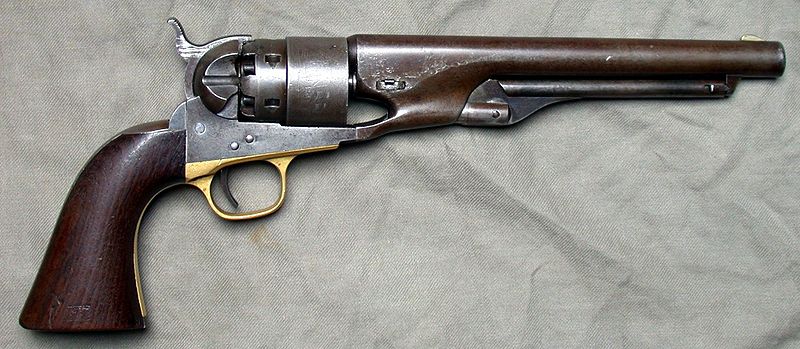
It was extremely common for the time.
The 1860 measured smaller, weighing 2.11-pounds. It was handier for an infantryman or artillery officer.
Starr Revolvers
On the western front, Starr revolvers ruled.
These were very early double-action revolvers. Down the road, the Army requested single-action models.
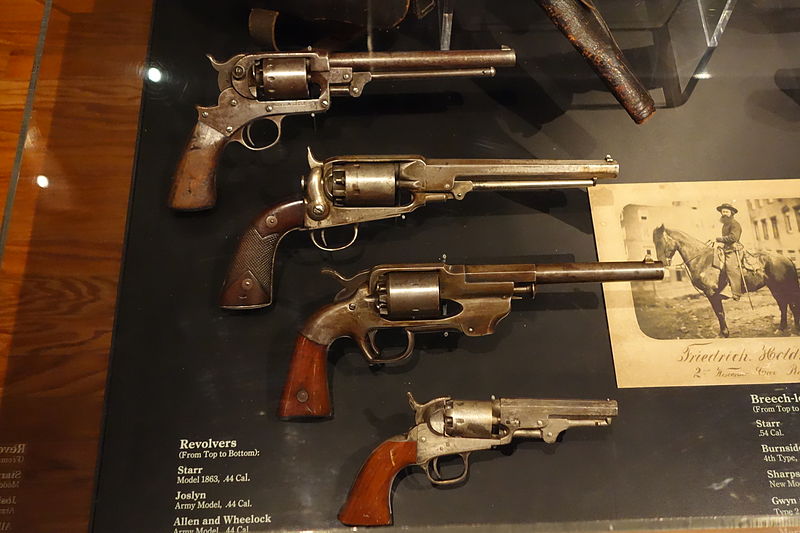
Single-action models were much cheaper — less than half the price of the double-action.
Starr revolvers came chambered in .44 caliber for the Army and .36 caliber for the Navy.
These revolvers offered a very steampunk look to them but were robust and duty-ready.
Colt Model 1851
Confederates also wielded Colts, specifically the Colt Model 1851 Navy Revolver.
The Colt 1851 was a 6-shot, single-action .36 caliber revolver quite common in the Civil War.
Robert E. Lee reportedly carried one. It was the most popular revolver in the Confederacy.
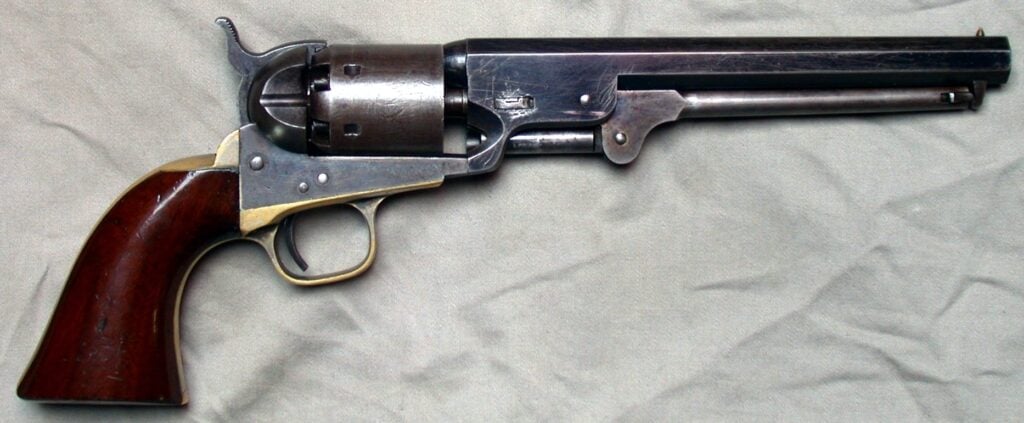
Southern companies like Griswold and Gunnison copied the weapon to provide the Confederates with a steady flow of Colt-designed revolvers.
The Confederates used a variety of revolvers imported from the French and English as well.
This included the famed LeMat revolver, which featured a 9-shot capacity and bottom barrel 20-gauge shotgun.
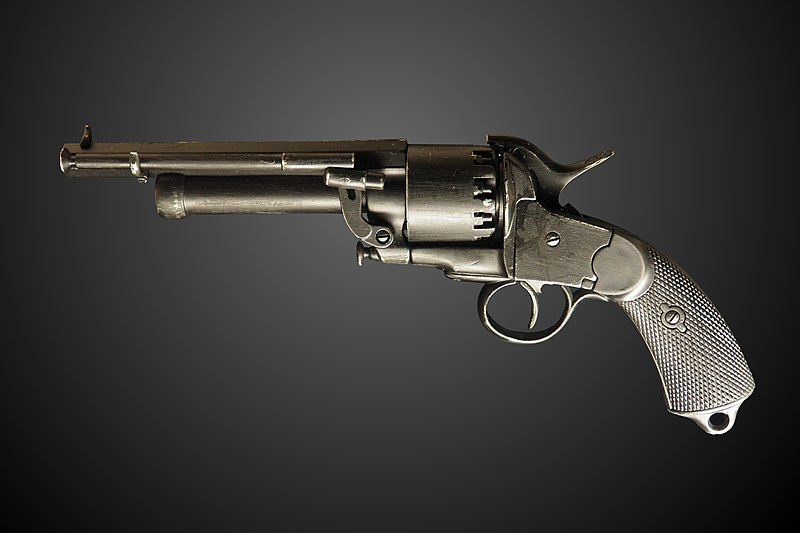
The LeMat provided more firepower than any other revolver at the time. That 20-gauge under-mounted gun must have been handy for cavalrymen.
Although unique and striking in appearance, these were issued in relatively limited numbers. It was tough to build and overly complicated.
Beaumont-Adams M1862 revolver
The Beaumont-Adams M1862 revolver was another imported revolver used by the Confederacy and the Union.
Yes, the gun named in The Office actually existed.

These English-made guns were double-action designs and used a wide variety of calibers.
Confederate soldiers were more reliant on imports than the Union, so it saw more action in Southern hands.
In total, about 1,700 were imported for Union Army use, while an unknown number were sold to Southern states.
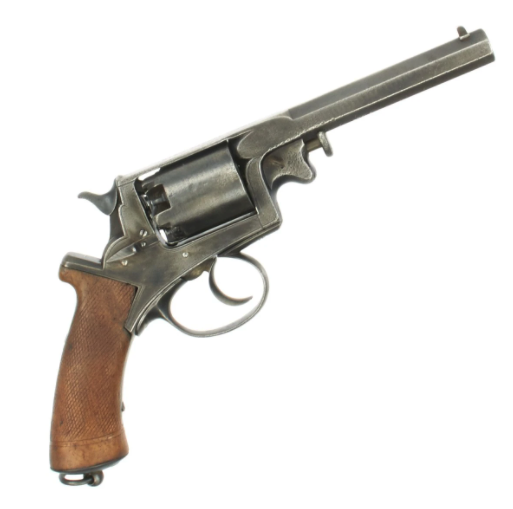
Rapid-Fire Weapons
America’s Civil War also saw the rise of proto machine guns.
The famed Gatling Guns were hand-cranked rapid-fire firearms, as were Agner machine guns.
These massive guns were used in limited numbers by the Union Army.
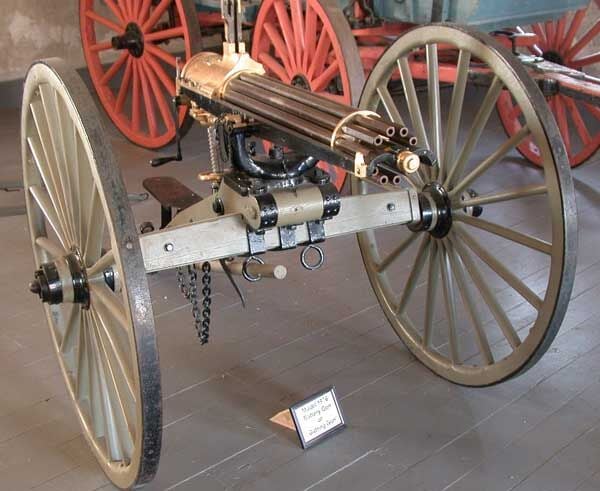
On the other hand, Confederates wielded the lesser-known Williams Machine Gun. It was actually a rapid-fire, hand-cranked cannon that qualified more like an early Mk19 than a machine gun as we know it.
The Williams could reportedly fire 1-pound cannonballs at a rate of 65per minute.
At the time, these guns were new. So, they didn’t have the dedicated tactics behind them that rifles and cavalry did.
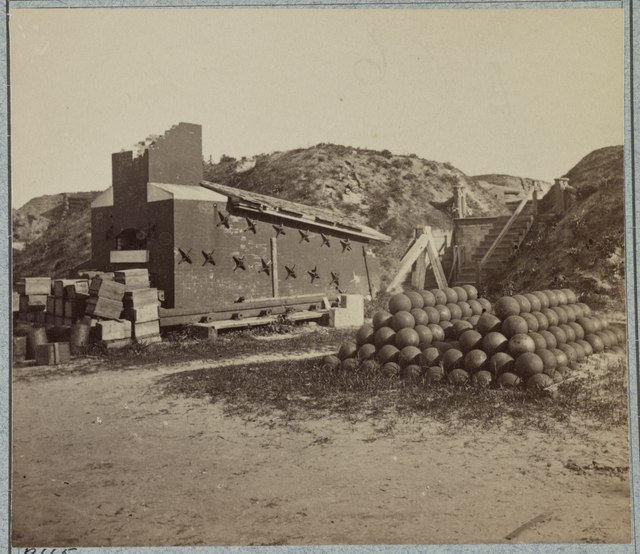
I’m sure generals were unsure how to use them effectively.
Also, they were mostly stationary due to their large size, so they could only be useful in limited scenarios.
Not to mention, these guns were quite expensive and labor-intensive to build.
While they weren’t used as heavily as other weaponry, they laid the groundwork for rapid-fire weapons to come.
Conclusion
The Civil War pushed firearms from smoothbore muskets to rifles to repeaters in short order.
We saw a massive technological advance with metal cartridges, and militaries would quickly learn and adapt to new technology.
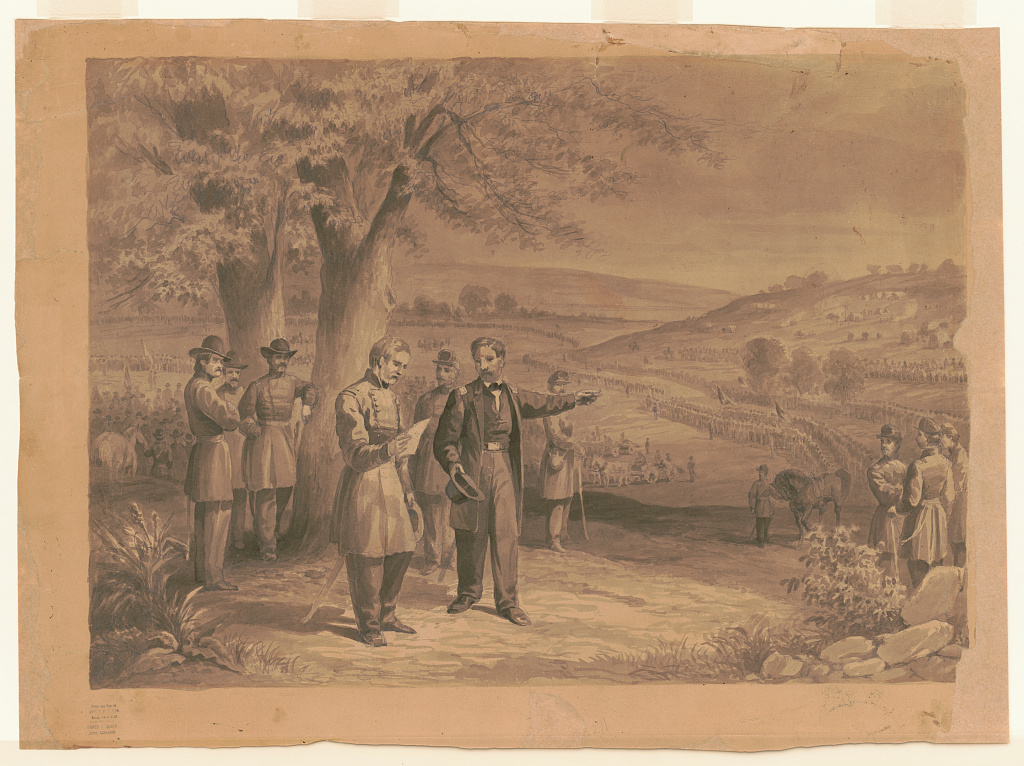
The weapons used in this dark time have since become famous. Collectors, reenactors, and the like seek out faithful reproductions. (I lust after a LeMat repro that doesn’t cost an arm and a leg.)
What guns did I leave out that you think should have been included? Do you have a favorite firearm from this point in history? Let us know below! Dig History? Check out our History category with more stories and weapons!

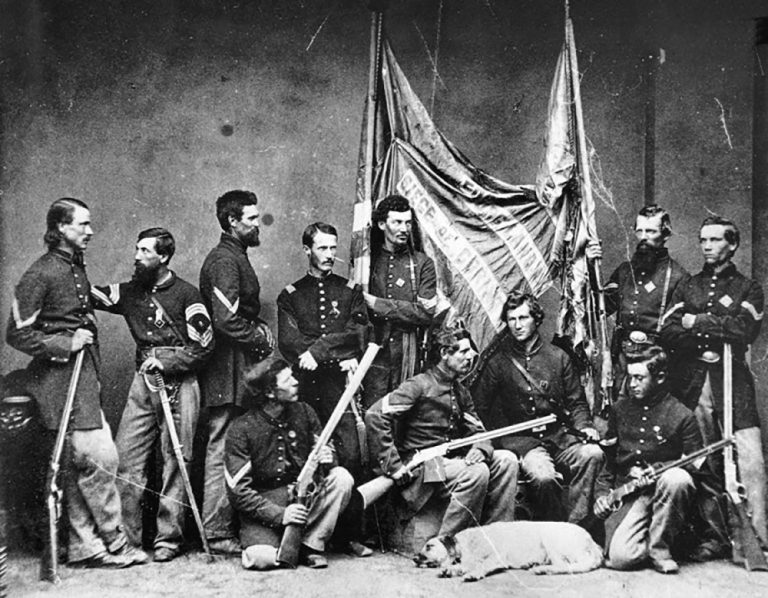







8 Leave a Reply
Good article. But you referenced “when American forces clashed.” American forces didn’t clash in the Civil War. By their own acknowledgements and declarations, the Confederates declared themselves not to be American any longer and started a war against America.
Let’s not rewrite history to try and placate revisionist attempts at history.
I like how you deleted comments now, is that new?
Forgot to add the article(s) that go missing when people complain. Don’t go soft like everyone else
Very nice article and I thoroughly enjoyed it as there is a lot of Civil War history around where I live. The American Civil War is often referred to as the first modern war, not only because of the weapon advancements you describe, but also because of the key role played by railroads in moving troops and supplies and even the use of balloons to carry artillery observers above the battlefield for better vantage points.
Great thanks keep it up
Very concise reportage of Civil War weaponry. Keep it coming!
I'm confused, you seem to use musket and rifle interchangeably. I recognize I'm being pedantic, but aren't the two mutually exclusive?
I only noticed one instance where the author 'may' have confused musket and rifle. That is in describing the Pattern 1853 Enfield. Searching online the term 'rifle-musket' is used often when talking about the Enfield. That term appears to have come about from changing an existing musket that originally had a smooth bore barrel and replacing it with a rifled barrel. Everywhere else in the article it appears the author uses 'musket' for smooth bore barrel guns and 'rifle' for rifled barrel guns.